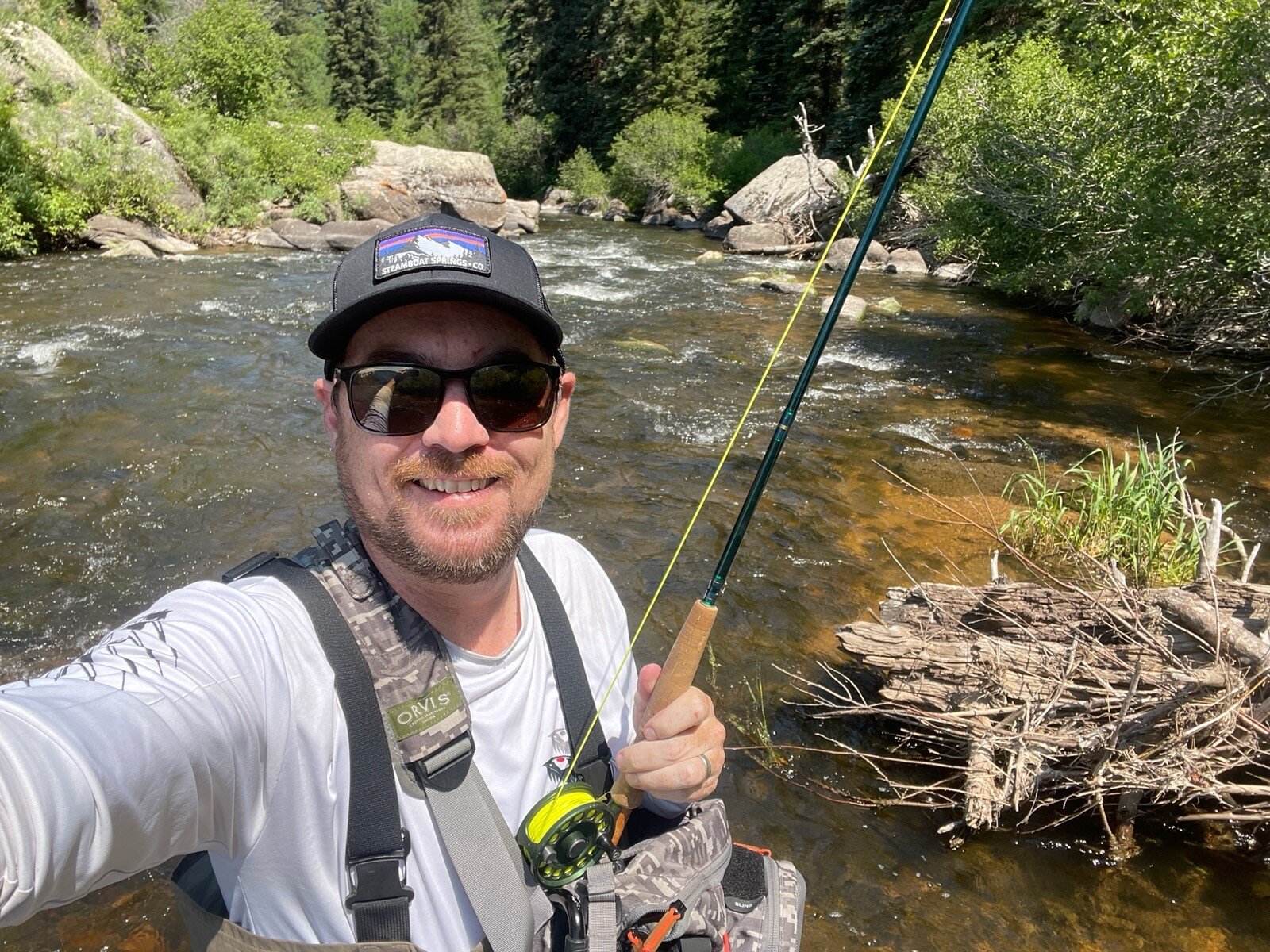Crafting the Elk Hair Caddis for fly fishing is like putting together a bug-inspired puzzle. Here’s the abridged version of the magic trick. Of course, for the full sleight of hand, detailed instructions or video tutorials are your best friends to avoid any fly-tying faux pas.
History of the Elk Hair Caddis in Colorado
The Elk Hair Caddis is another popular fly pattern used by anglers in Colorado for trout fishing. This fly imitates a caddisfly, which is a common insect found in many rivers and streams. The Elk Hair Caddis is typically used as a dry fly to imitate the adult stage of the caddisfly.
When fishing with the Elk Hair Caddis, using a floating line and a leader that matches the water conditions is recommended. This fly can be effective in various types of water, including riffles, runs, and pocket water, where trout often feed on caddisflies. A dead-drift presentation, where the fly drifts naturally with the current, is commonly used to entice trout to strike. Anglers should watch for any movement or rises that indicate trout taking the fly.
Elk Hair Caddis is a widely used fly pattern for trout fishing in Colorado. It imitates the adult caddisfly and is typically fished as a dry fly. It can be effective in different water conditions, and anglers often use a dead-drift presentation. Paying attention to trout behavior and using proper techniques can increase your chances of success when fishing with the Elk Hair Caddis.
How to Fish the Elk Hair Caddis
To fish the Elk Hair Caddis, use a 7-10' rod with a floating line. Cast the fly similarly to a dry fly and watch for rises indicating trout taking the fly. The Elk Hair Caddis is effective in turbulent waters thanks to its thick elk hair wings and hackle body. Trim the body hackle flat in slower waters to prevent sinking and maintain surface presentation.
- Rod: 7-10' rod with a floating line for best results when fishing the Elk Hair Caddis.
- Cast : similarly to how you would cast a dry fly.
- The fly's thick elk hair wings and hackle body help it stay on the surface, making it effective in turbulent waters.
- In slower waters, trim the body hackle flat to prevent the fly from sinking and maintain its presentation on the surface.
Tying the Elk Hair Caddis
Materials needed:
- Hook: Dry fly hook (e.g., size 12-18)
- Thread: Brown or color to match the body
- Body: Peacock herl or dubbed synthetic material
- Wing: Elk hair
- Hackle: Brown or grizzly
- Head: Tying thread or dubbing
Step-by-step instructions:
- Get your hook ready in the vise. Start the thread near the hook eye and secure it along the shank to the bend.
- Tie in a small clump of elk hair by the tips, extending beyond the length of the hook shank. Position it so the tips extend just beyond the hook bend.
- Advance the thread to a point above the hook barb. At this point, tie in several strands of peacock herl or dubbing material as the body. Wrap the herl/dubbing forward to create a tapered body and secure it with thread.
- Bring the elk hair forward over the body to form the wing. It should angle slightly upward. Secure the hair with thread wraps and trim any excess extending beyond the hook eye.
- Prepare a brown or grizzly hackle feather. Measure it against the hook shank to ensure the correct length. Tie in the base of the hackle feather with a few wraps of thread.
- Wrap the hackle feather 3-4 times around the hook shank to create a neatly spaced hackle. Secure it with thread wraps and trim any excess feather.
- Build a small head by making a few thread wraps at the hook eye. Whip finish and trim the thread.
- Apply a drop of head cement or clear nail polish to the thread wraps to secure them in place.
Remember to tighten and apply consistent pressure while wrapping materials to achieve a well-balanced and durable fly.
I recommend referring to step-by-step tying tutorials or video demonstrations of the Elk Hair Caddis fly pattern for more detailed instructions and visuals. These resources can provide additional guidance to ensure proper execution of the pattern.
.png?width=300&height=100&name=Copy%20of%20Rise%20Beyond%20Logo%2012.31.24%20(300%20x%20100%20px).png)



.jpg)